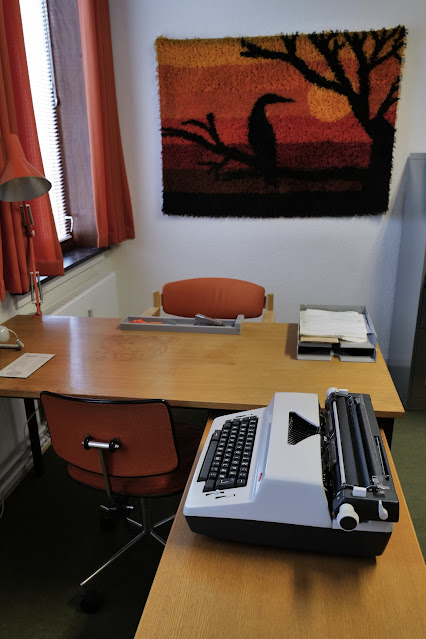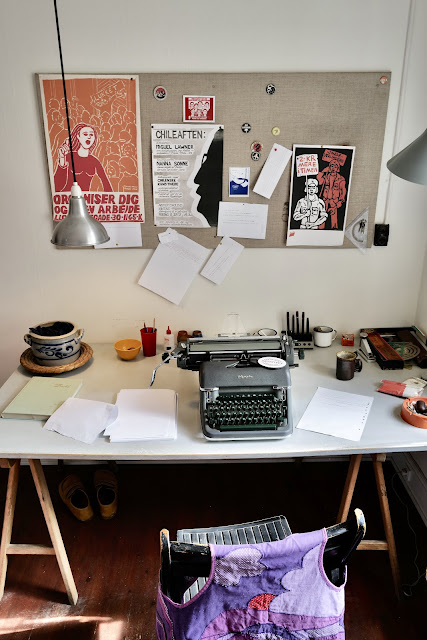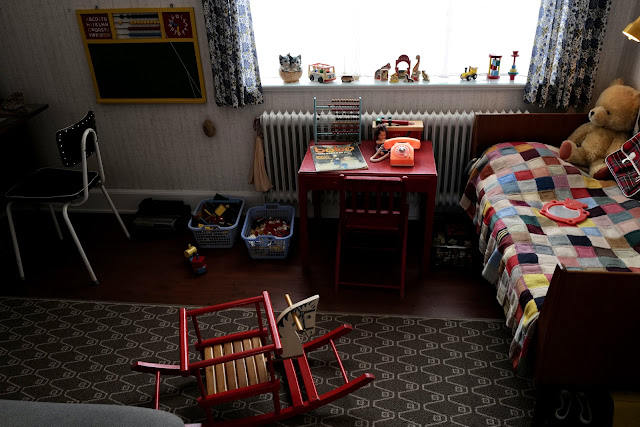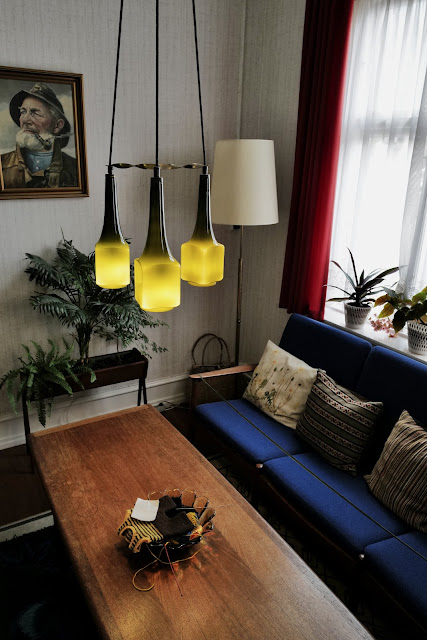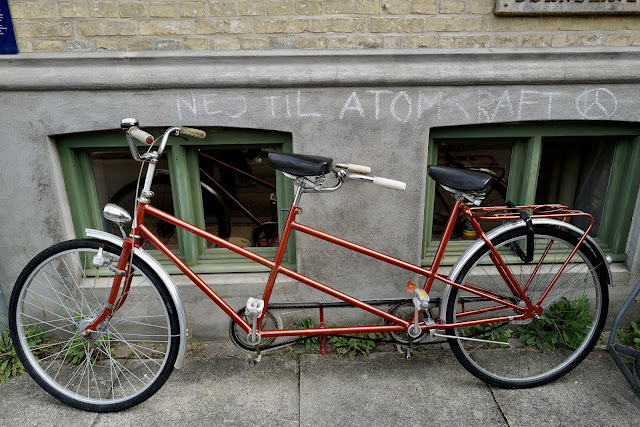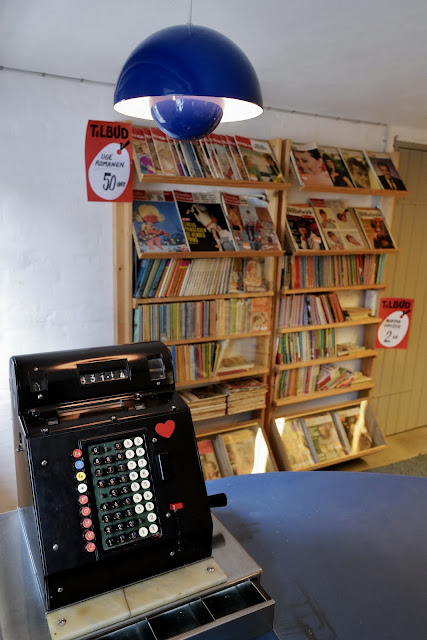And so we embark on the second leg of our tour through Den Gamble By...
Those glorious swirly patterned tiles bring back lots of memories. We had them on our kitchen walls in the 70s and, if memory serves me correct, in-laid on the top of a little wooden table which stood in the porch.
The table was home to mess of geraniums cultured by my mother from a solitary plant. I remember their distinctive lemony smell as you entered the house. Funny how those little details stick...
A typical 1970s hair-dressing salon - basic but rather stylish, I think.
I love the chair, in particular, with its beautiful curved metal frame. Why is Scandinavian design so much more aesthetically pleasing than our own?
Those were the days you could buy cigarettes from a street vending-machine. None of the modern-day hassle of pretending to be over 18 to purchase some dubious kiddy-friendly, fruit-flavoured multi-vape.
It seemed like everyone smoked in the 70s. The strong, stale smell of nicotine permeated everywhere - schools, offices, factories, homes and pubs included.
I remember my father's nicotine-stained fingers. Yellow to match the living-room ceiling where the plumes of dense smoke curdled nightly.
It's back to the kitchen and that gorgeous Skandi simplicity.
No rows of gleaming (and largely unused) assorted kitchen frippery to be found here. Not that it stopped them turning out tasty, wholesome and fresh meals on a daily basis.
As an aside, the micro-wave was invented in 1945 by Percy Spencer. The first models were enormous, about six feet tall and weighing in around seven hundred and fifty pounds. Sounds like the average modern-day American.
The next apartment we visit is home to a spinster Headmistress who has
furnished it with the belongings of her parents. It occupies a corner site and seems positively spacious compared to those we've visited elsewhere in the block.
From the look of the labels on the suitcase in the bedroom, the lady in question has clearly taken advantage of cheap flights readily available from the burgeoning commercial airline sector.
In sharp contrast to the stout, dark-wood furniture inherited by the spinster Headmistress, the apartment next door is light, colourful and airy.
It's occupied by a commune of students who've pooled resources to create a markedly different ambience. The crocheted rug and knitted sweaters must have come in handy during cold 70s winters.
The final apartment houses a nuclear family - mum, dad and two children. The furnishings are tasteful and restrained.
As always, a ubiquitous line of pot plants decorates the window-sill of the sitting room. I love the stunning simplicity of the opalescent light-fitting above the coffee-table. Not so sure about the pipe-smoking Captain Haddock in the background, though!




